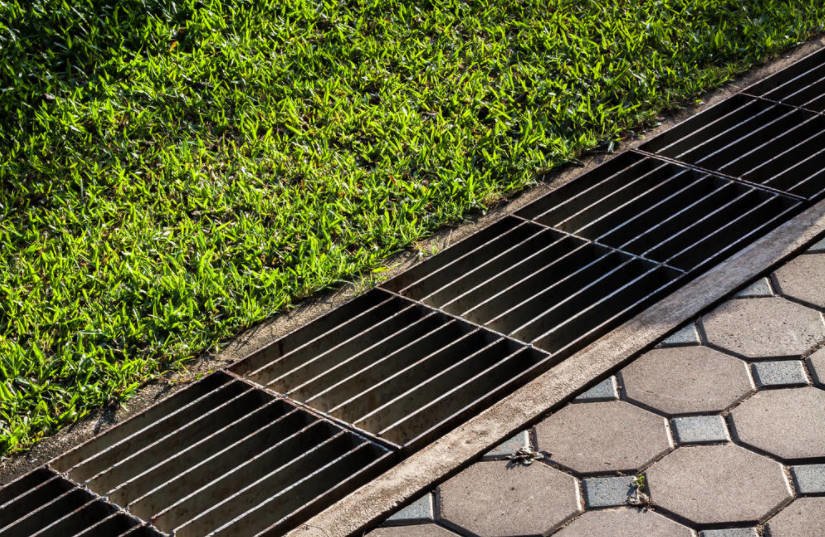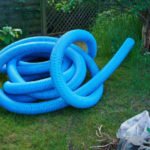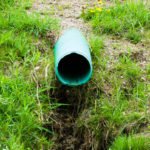The device of drainage systems is one of the components of the site improvement works. In some cases-a very important component. Even if the owner and did not plan large-scale works on drainage of the territory, at least superficial drainage ditches, a stage and drains all the same are arranged.
In this publication, I want to dwell in more detail on ways to eliminate excess water on the site and decorative possibilities of design devices for moisture removal.
After all, the water on the site is not only a natural disaster, it is also a huge opportunity and an excellent tool for landscape designer.
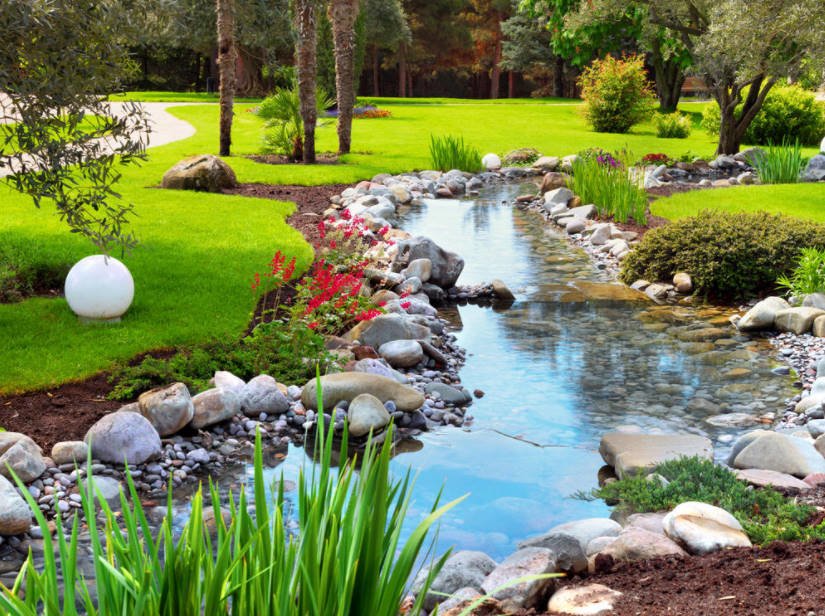
Decorative design of watercourses in the landscape of the site
Project of drainage system on site
The device of the drainage system is an important stage in the improvement of the site. If there is a danger of flooding by high ground waters or the soil is poorly permeable for water, drainage of the ditch at construction of the house is obligatory. It is better to find out the need for this in advance, so as not to face the problem after the construction of the house is finished.
Drainage design therefore called system, underground drainage and pavement, the drainage pipe and the surface of the groove, even a pond — everything is one complex, an artificial reconstruction in a small area of natural water cycle in nature.
Drop down with precipitation, the moisture is partially absorbed by soil, partly flows into the ponds following the natural slope. Water, which infiltrated into the soil, becomes unpaved and also, along the slopes of the waterproof layers, flows in the direction of reservoirs located in the lowlands.
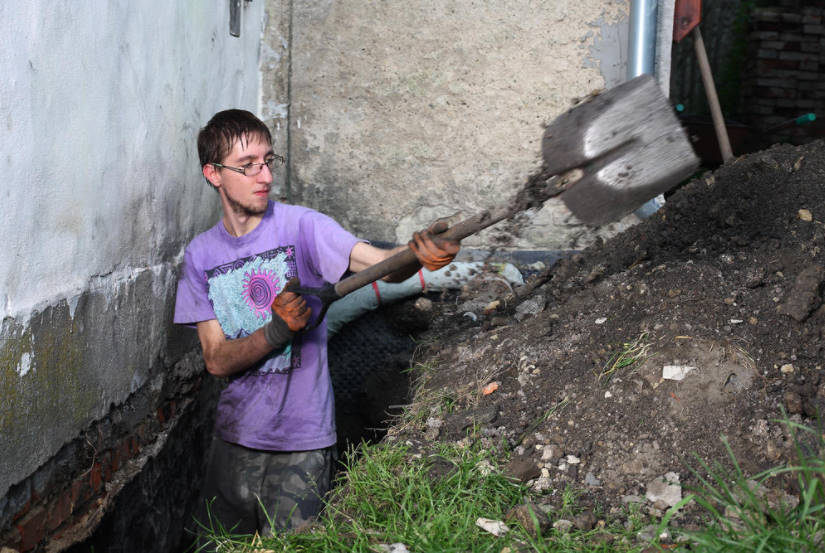
The device of the system of drainage of the base of the already constructed house
If you are going to make a drainage system, you need to try to recreate the natural conditions of existence of water in nature using artificial devices. It is highly desirable to calculate the system so that it works as independently as possible, without the use of coercion in the form of drainage pumps.
It is necessary to try to think over the project of water disposal so that there was no need to force water to move where it does not flow. The principle of operation of the drainage system should be based on gravity: surface water is collected in ditches and allow it to leak from the site; slightly permeable to moisture clay soil with the help of drains and drainage pillows make it easy to absorb water.

Forest stream
So, drainage ditches and chutes simulate rivers, drains, underground — current ground waters, gathering places designated water — lakes and sea: everything in nature. Then the functioning of the drainage system will be the most reliable, independent from power outages. And still such system will be easier to enter into a landscape. When planning a drainage, it is necessary to take into account the level of groundwater, the natural slopes of the terrain, the depth of the Foundation, the location of buildings and tall trees on the site.
Surface drainage
Since the main water load falls on the warm season, for the removal of water is not in all cases required to bury below the depth of freezing. Surface drainage is quite effective, especially if the site is located on a small slope.
The ditches and grooves
The easiest and most accessible option to divert water is to arrange surface drainage grooves. Drainage ditches cope with water drainage during heavy rains or during snow melting. Usually they are placed along the perimeter of the site, respecting the drafts from the natural flow of the water.
Ditches are directed towards the water intake located in the lowest part of a site. It can be a street gutter, passing along the road, storm sewer, if the village is equipped with it, as well as a pond — natural or artificial.
Except ditches on borders, if necessary apply the device of surface drains and in the territory of the site.
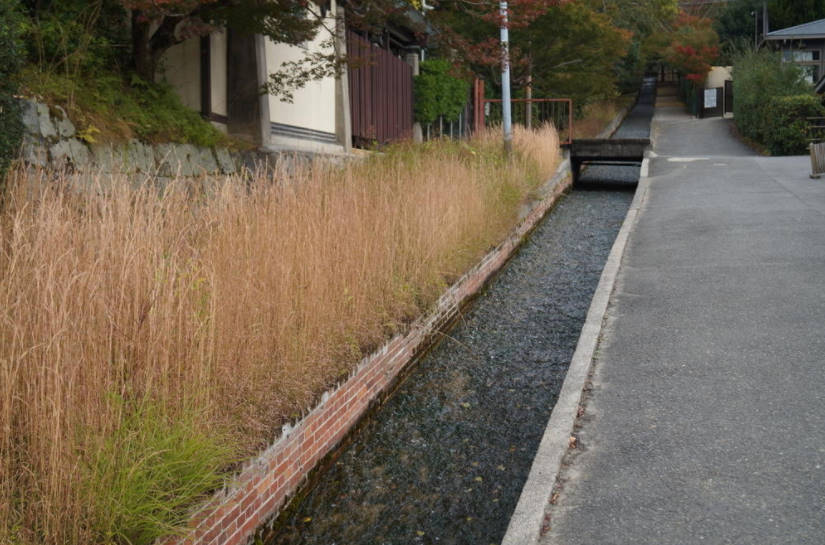
Street ditch
The bottom and sides of trenches doing just clay or lined with any material, for example, stone or slabs of concrete. At arrangement of channels it is necessary to distinguish a sewage and drainage ditches.
The gutter accepts flows of water already collected earlier, or water coming from above — for example, during a rain. Therefore, its walls can be waterproof. Such channel make out in the form of concrete or plastic trays. Drainage ditch absorbs excess moisture from the soil, so its walls must be permeable to water.
Surface drainage ditches can be arranged above the deep drainage pipes located in the soil as an additional measure.
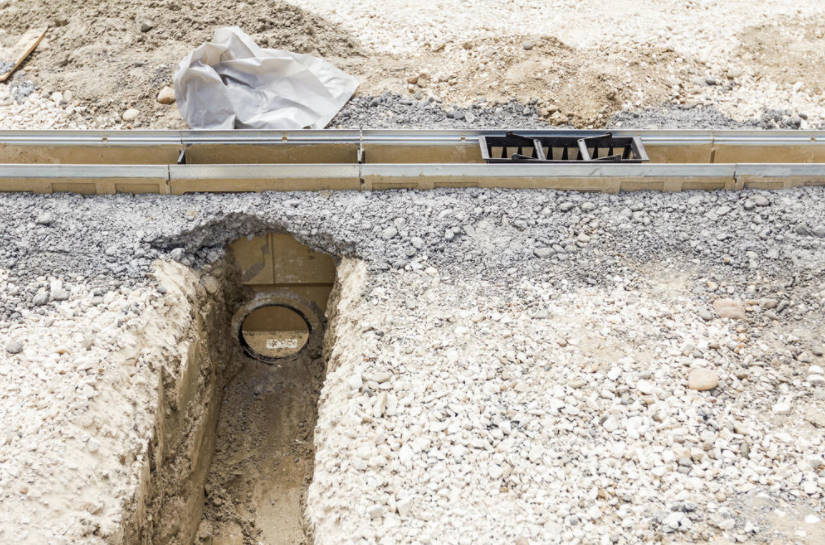
Plastic drainage trays
Do not be confused by the fact that your site will appear trenches. There are several ways of decorating them that can turn utilitarian drainage structure into an element of landscape design. The choice of style depends on the design of the entire site.
Channel for water drainage using prefabricated trays make decorative grilles — plastic or metal.
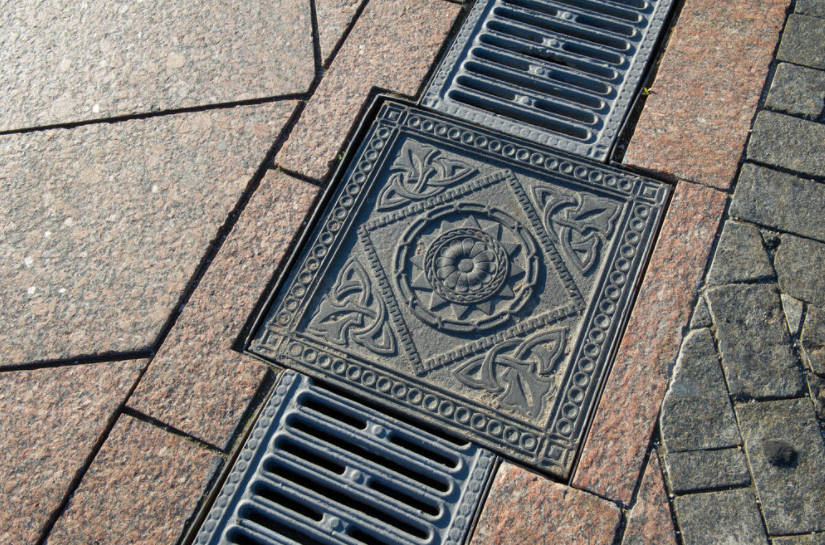
Decorative trench grates and drainage well manhole
As a material for finishing the walls of the ditch, you can use natural stone, just do not forget that if a solution is used to fix the stone, then this method is suitable for the gutter. Drainage ditch should be finished with stones of large size, using the method of” dry laying ” — then the walls will remain permeable.
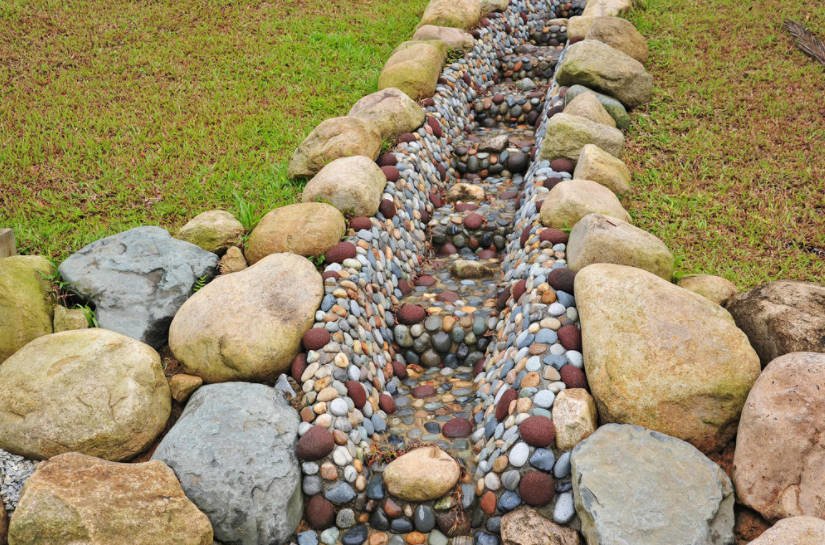
Decorative design gutter
In the photo below you can see a drainage ditch lined with natural stone using the technology of “dry laying” — a functional component of the drainage system and a decorative element of the landscape.
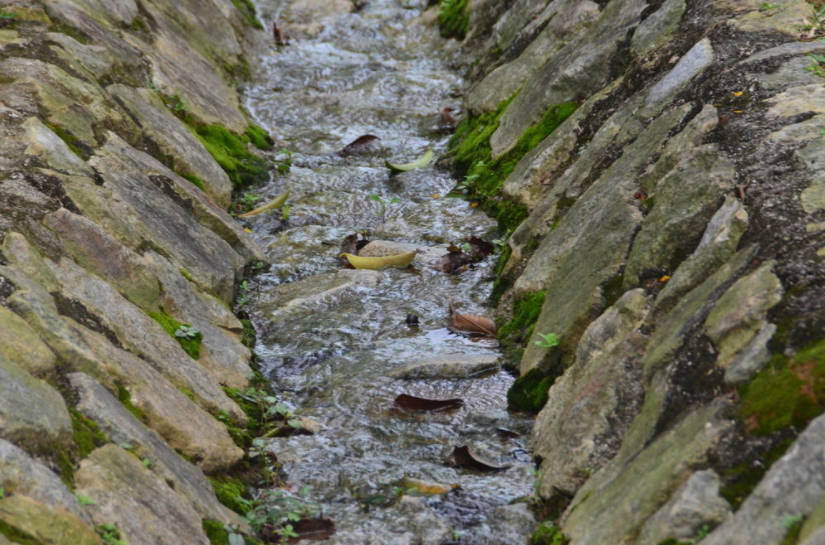
Drainage ditch, finished with natural stone
Another way to decorate and at the same time to strengthen from crumbling walls — the so-called Reno mattresses. These are analogues of gabions-metal grids filled with rubble or cobblestones — only oriented not vertically, but horizontally or obliquely.
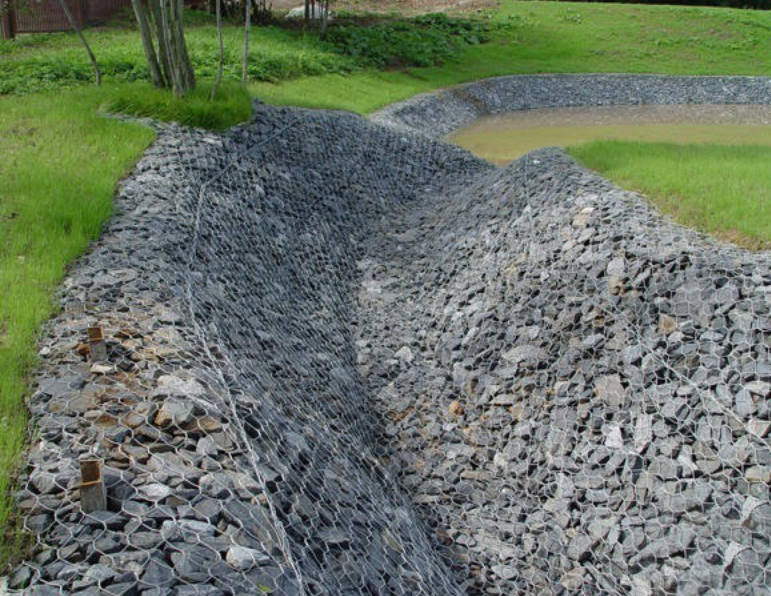
Drainage ditch and slope of the pond shore, reinforced with Renault mattresses
The use of Reno mattresses is not only a way to drain the soil, but also an opportunity to strengthen it on the slopes of drainage ditches, as well as ravines and ponds, if they are on your site. Strengthening the soil on the slopes of this technique in the design of the site can be combined with gabions as retaining walls or fences.
In addition to the ditch itself (shallow and narrow ditch), surface drainage can be arranged in the form of:
- natural stream;
The drainage ditch does not have to be straight. A little twisty shape will not reduce drainage efficiency, but will look more natural and fit better into the design. The ditch should be dug with inclined walls (tilt angle — about 20 degrees) to avoid spilling the soil. The walls are strengthened with turf or stone, and decorative planted moisture-loving plants.
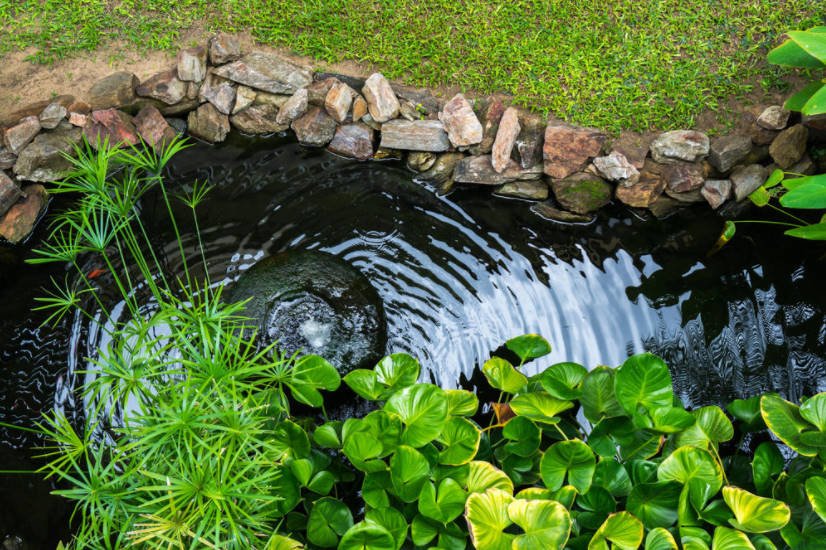
Drainage ditch in the form of a stream
- “French” ditches;
The French ditch is a rather deep trench, completely covered with rubble. This option is not only perfectly copes with the function of removing excess water, but also is a stylish decoration of the site. In addition, it is devoid of the disadvantages of the usual open ditch: it does not accumulate debris, and the water does not bloom.
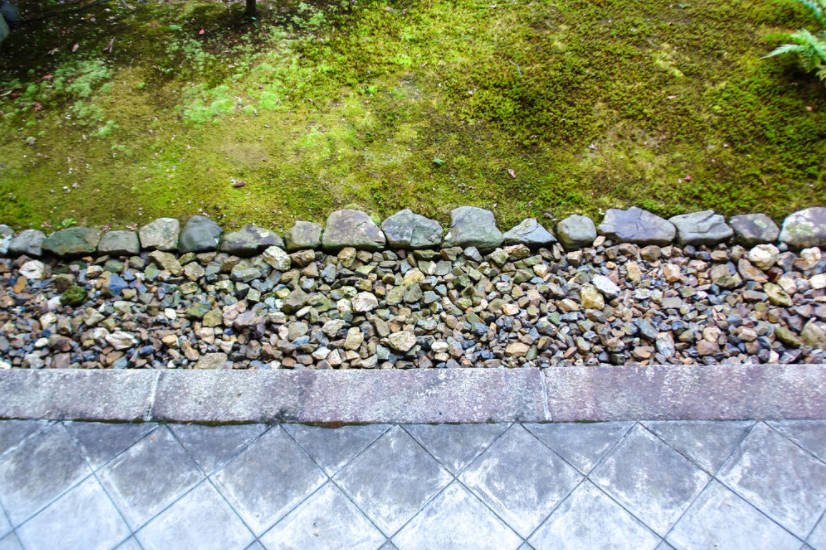
French ditch
- “dry” stream;
“Dry channel” in landscape design is used as an independent decorative element. And dry streams are a great way to disguise drainage. On the device they are similar to the French ditch, the trench is filled up with rubble to the top. Difference in appearance.
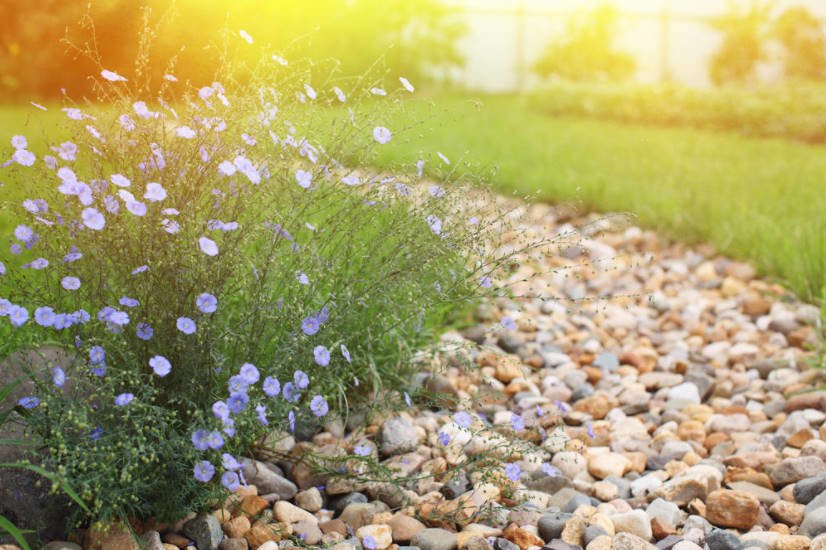
Dry stream-masking for drainage ditch
French ditches are straight, they first appeared in regular parks, popular in France in the Baroque era. Dry riverbed mimic the way the dried natural river or stream — stone river.
- Garden paths;
Correctly arranged garden paths with filling good water filtering materials (gravel, sand) in Foundation, laid with a slope to the edges, able themselves to effectively drain the project area. They can also mask drainage ditches with surface backfill drainage.
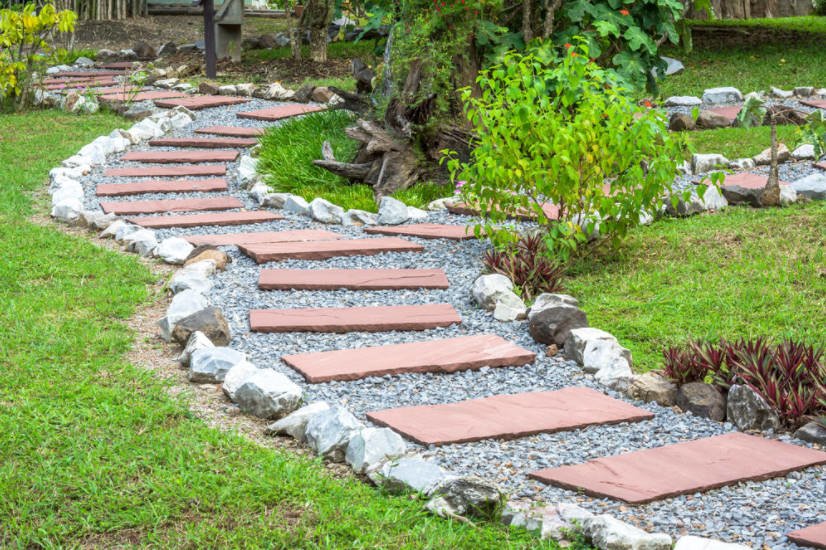
Garden paths – part of the drainage system
At the device of such tracks do not forget that the surface must be permeable. As a material, use fine gravel, granite chips, paving stones, laid without mortar, in the sand. In addition, the paths in the garden on the outside can be supplied with drainage trays directed to the General drainage system.
Garden water bodies as elements of drainage system
Ditches of various design and appearance of the water flows into the drain of one of the options which can be pond — natural or artificial. Surface drainage-an excellent occasion for the device of a pond in the country. It will serve as a water intake of the drainage system of open type, and in combination — the center of the landscape composition of the site.
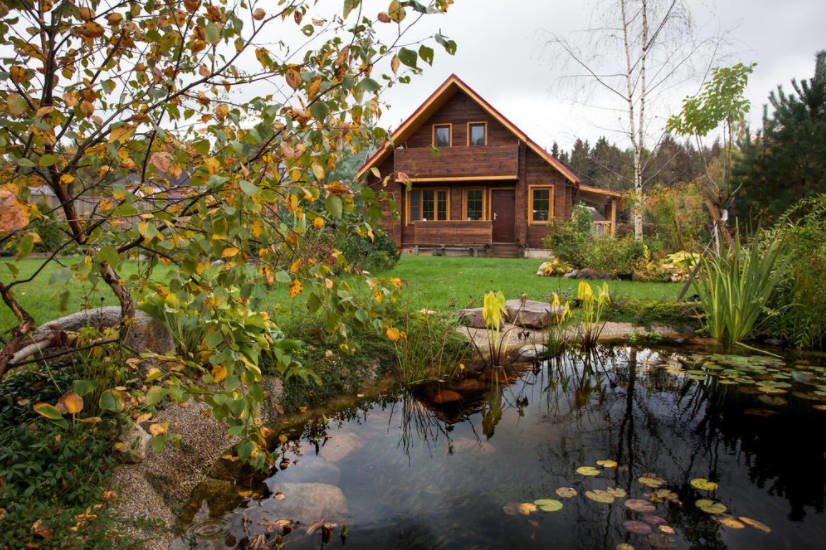
A pond on the plot
The pond, if it is not built with the help of a finished plastic container, and has a natural bottom, in itself is a drainage. If it is located at the bottom of the plot, excess groundwater and surface water will flow into it, draining the territory. In simple cases, flooding the pond, dug in the right place, can be the only and sufficient element of the drainage system.
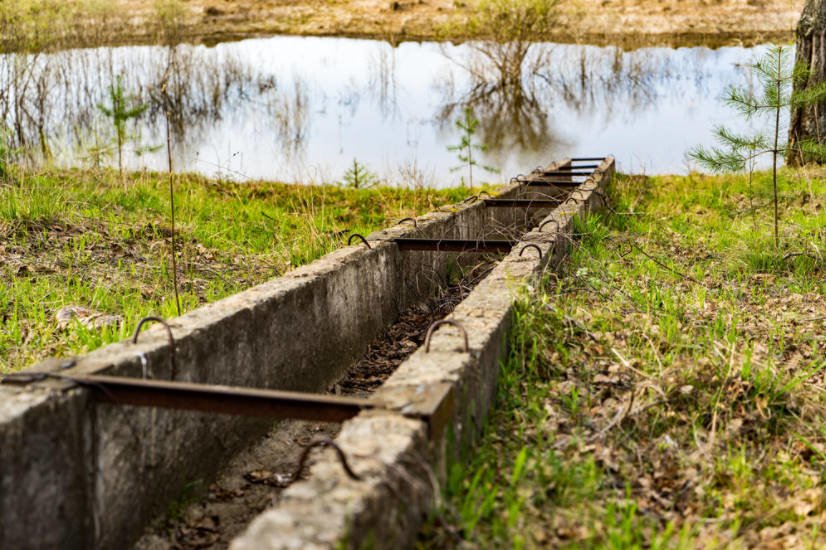
A superficial pan for water drainage into a natural reservoir
If there is no place for garden drainage pond on the site, but there is a natural pond, lake or river nearby, you can take the collected water there. Of course, if the feasibility of such activities adequate work for contractors. Divert water can be superficial way, all the same a ditch (tray), or paving the underground pipe.
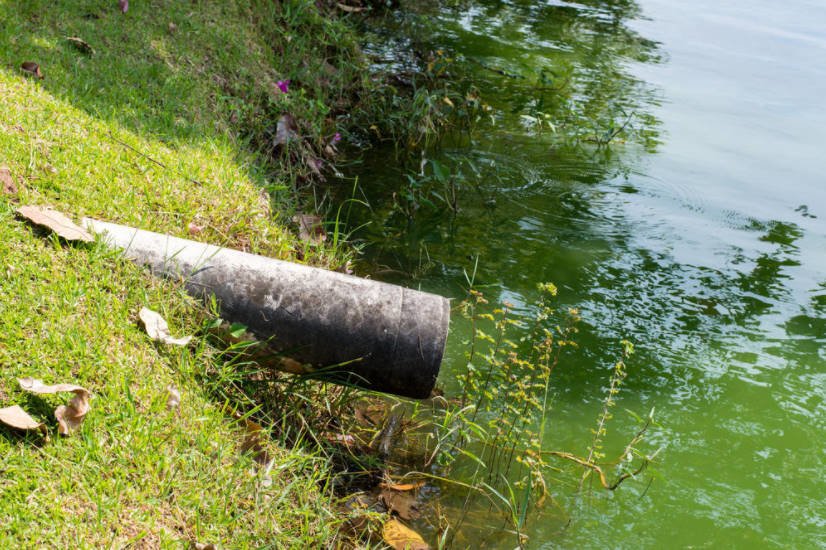
Pipe drainage systems, directing runoff to natural water
You only need to make sure in advance that the water level is always below the pipe, even in the spring flood. In the spring otherwise you get the opposite effect: instead of removing the excess water from your site to you tube will be replenished and a portion of the reservoir. Or the pipe should be equipped with a check valve.
Don’t forget that in natural water cannot be discharged highly contaminated water, such as filtration systems are of the septic tank.
Surface drainage from buildings
Water flow in the direction of drainage ditches should be facilitated by a well-arranged vertical layout of the site in the development of the project of construction of houses and other buildings. This layout is one of the components of the device of the General drainage system. Creating a mound under the house during construction improves the conditions for removal of rain and melt water from the Foundation of buildings.
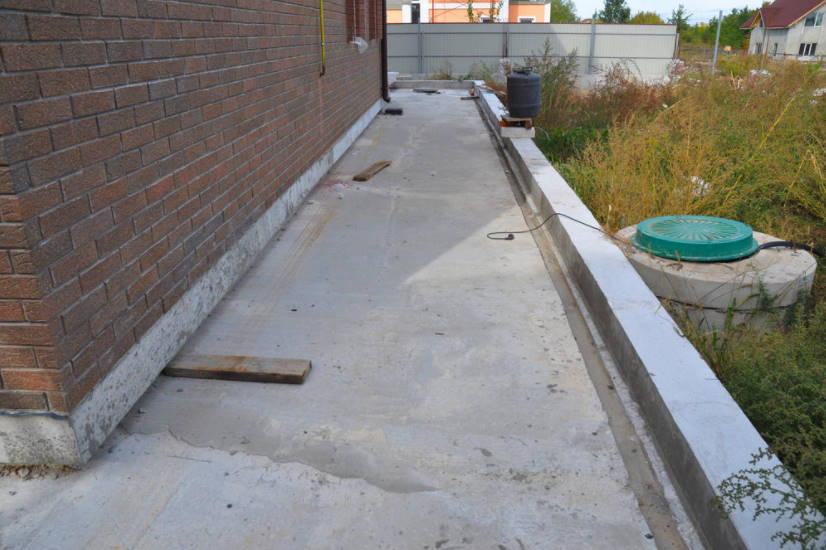
Blind area around the house
For water drainage blind area around the house, Playground and paths before the structure is made with a slope towards total sanitation. In the direction of sewage and drainage ditches or structures of underground drainage should be oriented and drainage trays that take water from drainpipes in buildings.
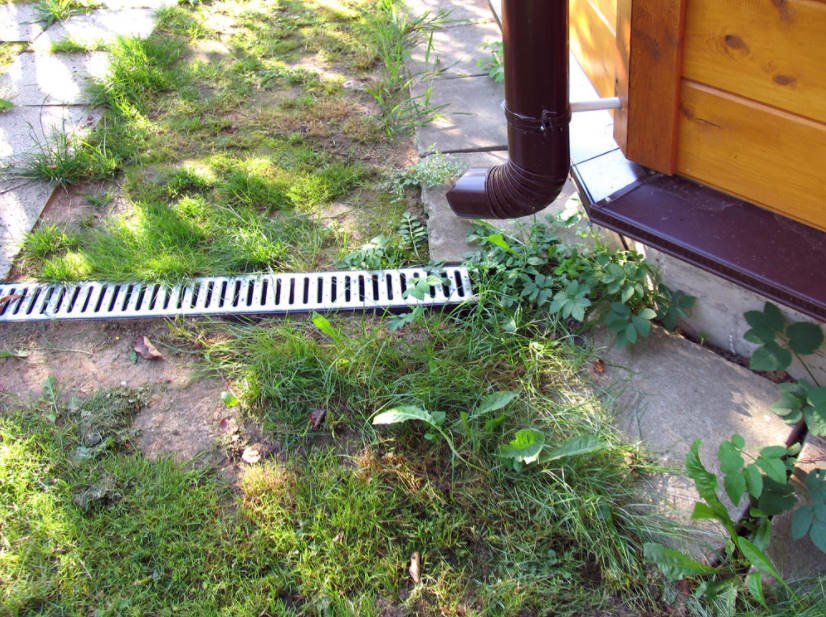
The drain pipe directed to an aperture of the storm Sewerage
Arranging the receivers of the water under the gutters, you should consider the amount of incoming water. So, if the weather forecast says that there were 6 mm of rain (which is the average rain), it means that for each square meter of the roof of the house fell 6 liters of moisture. That is, with a roof area of 100 square meters, you have to provide an outflow of water with a volume of 600 liters.
Backfill drainage around the house-soft blindfold
Around the house (around the perimeter) can be organized backfill drainage. The principle of its structure is the same as in the described above “French” ditches: a trench covered with gravel and gravel. The top layer of backfill can be decorative, for example, of colored pebbles.
Backfill drainage-replacement or addition of hard surface. It may be better suited to the design of your site. There are several options for the final coating of the soft surface:
- decorative gravel or pebbles;
- lawn grass;
- ornamental plant.
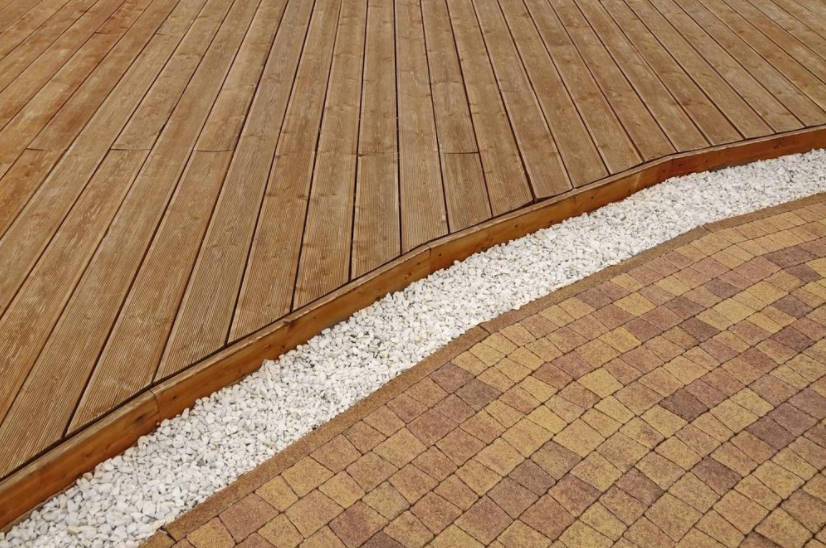
Drainage around the terrace
It is good to use a backfill drainage not only on perimeter of buildings, but also around an open terrace and a pool — it will make a platform more accurate.
Creating a surface drainage system is not too difficult. Of course, you have to dig through the ditches and ennoble them, if necessary. But in General, the work can be carried out independently, armed only with a shovel and a wheelbarrow.
Most importantly, properly plan the direction of the gutters: right, so that the excess water is gone and planting, especially trees and shrubs, with no moisture left. It is also important to observe the slopes to ensure self-flow.
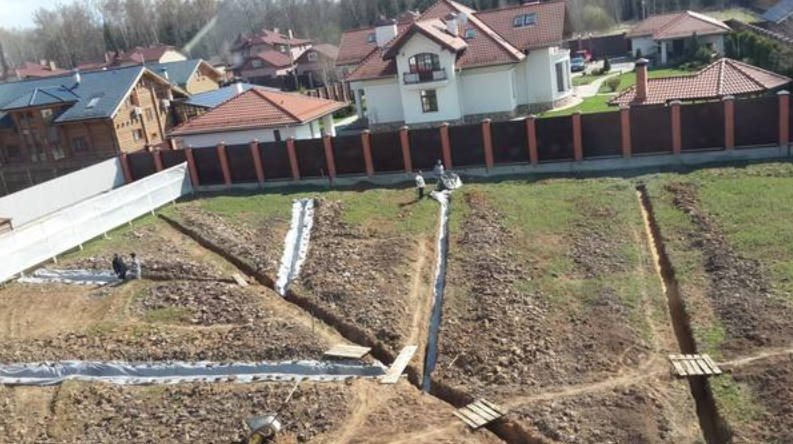
Drainage area
If the conditions on the site from the point of view of excess water are more severe, groundwater is located high, the surface drainage can not do. Will require “heavy artillery” – deep drainage. There is already a shovel to handle, will require significant earthwork and engineering calculations.
